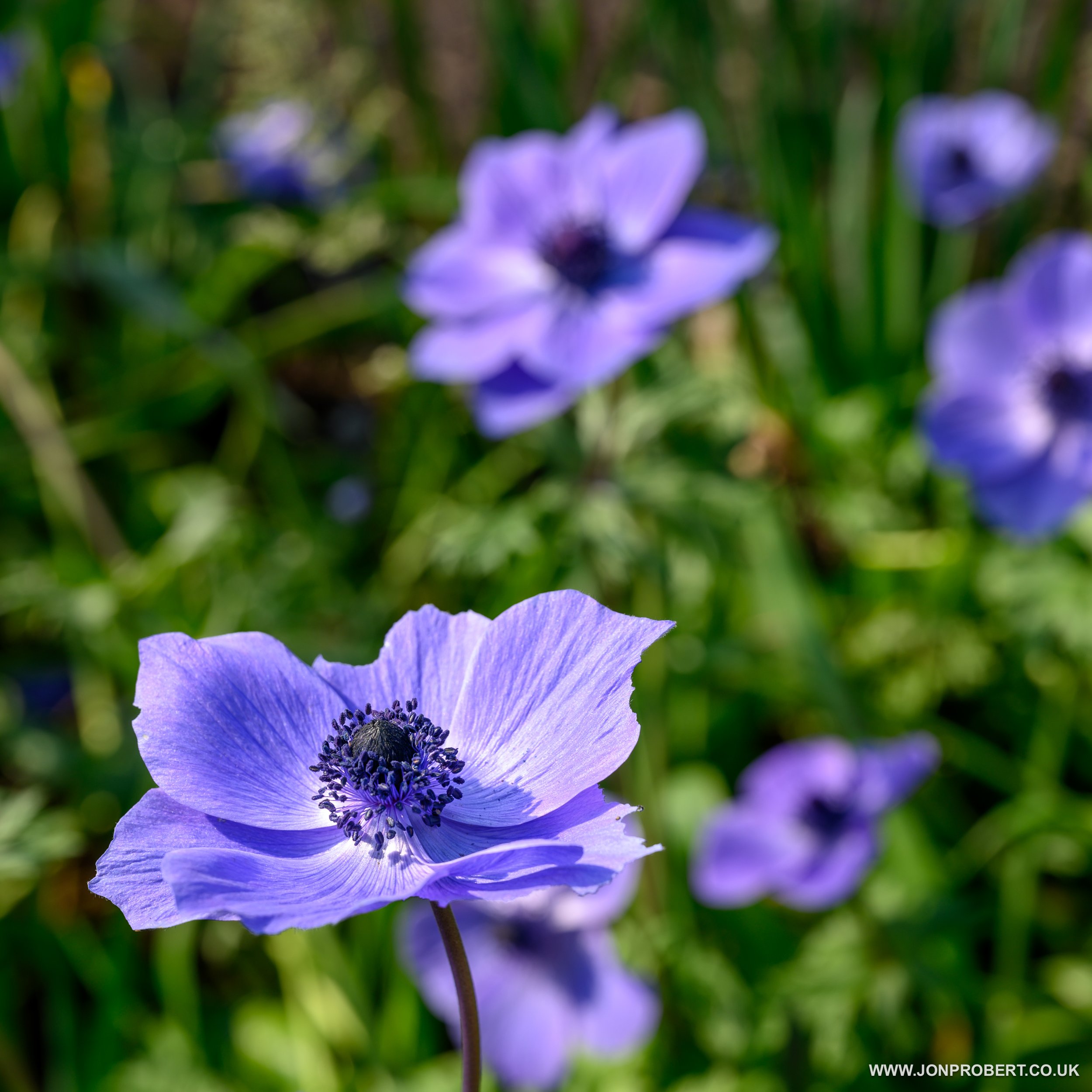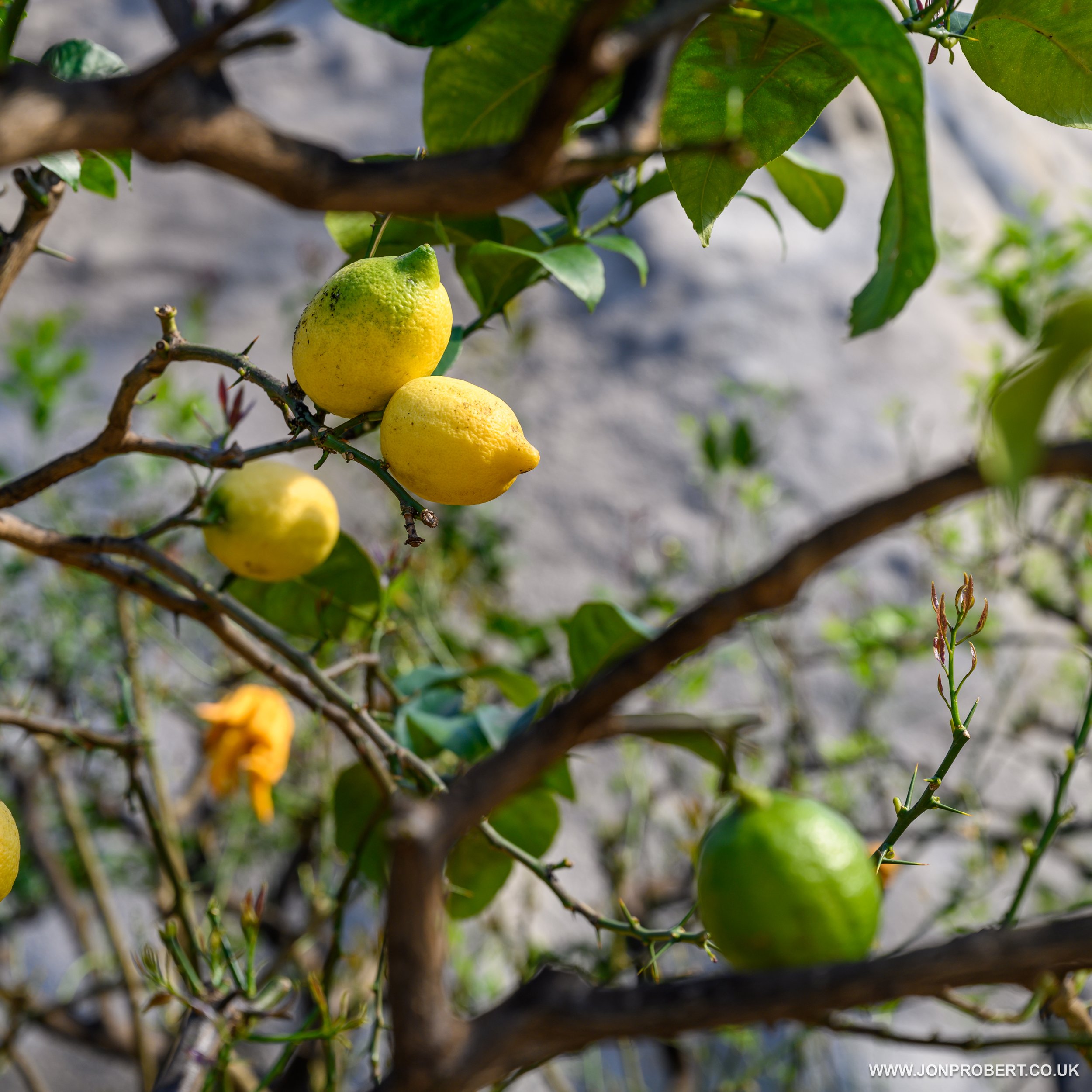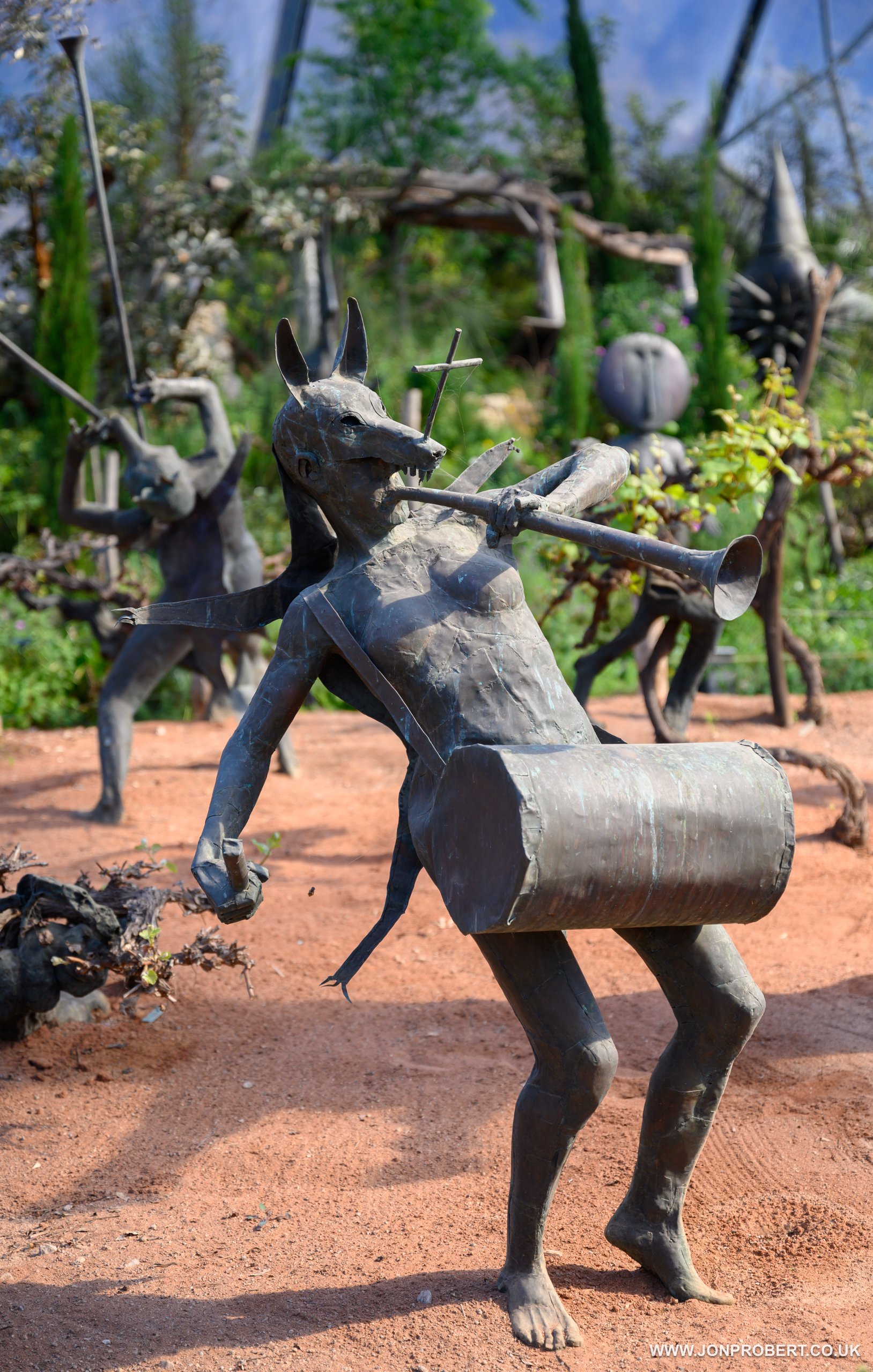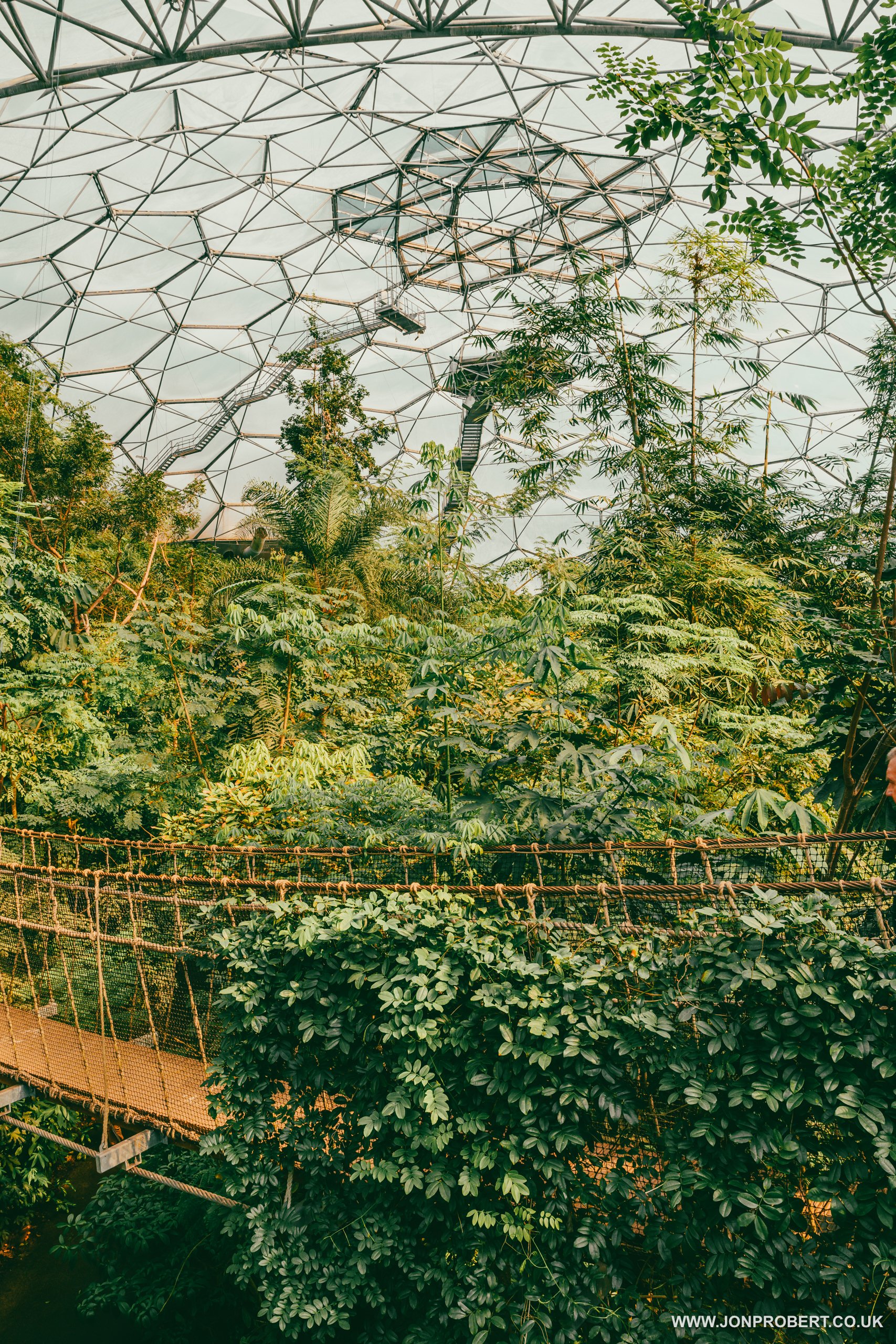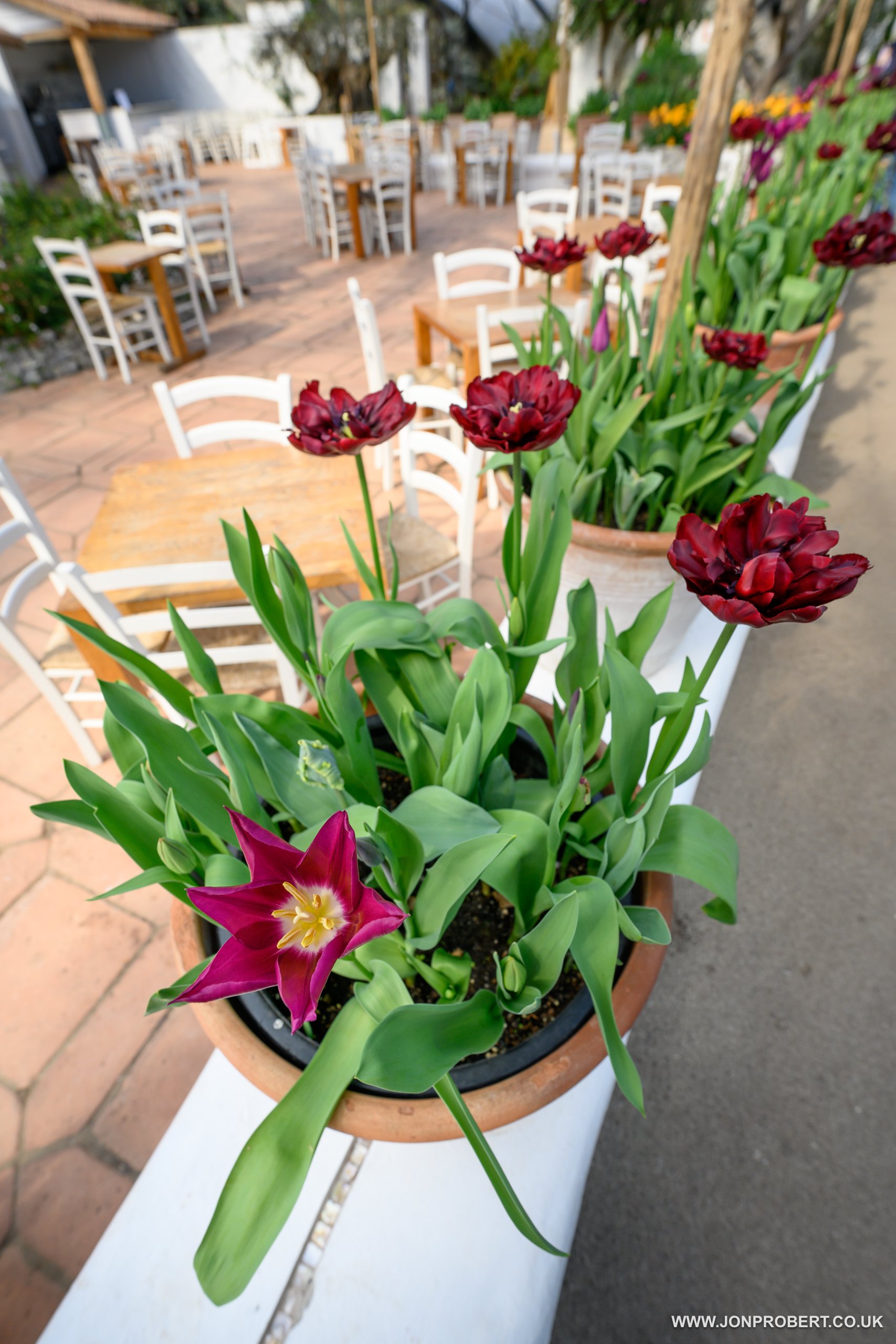
The Eden Project
Dubbed the Eighth Wonder of the World by some, Eden is a dramatic global garden housed in tropical biomes that nestle in a crater the size of 30 football pitches.
With a worldwide reputation, and recognised by the British Travel Awards as the Best UK Leisure Attraction five years running, Eden barely needs an introduction, but this epic destination definitely deserves a day of your undivided attention. More than just a huge, tropical garden, Eden is a gateway into the relationships between plants and people, and a fascinating insight into the story of mankind's dependence on plant life. Not only a mind-blowing visitor attraction, Eden is also fast-becoming a unique resource for education and knowledge towards a sustainable future.
Below are a selection of photographs taken during a visit in March 2023.
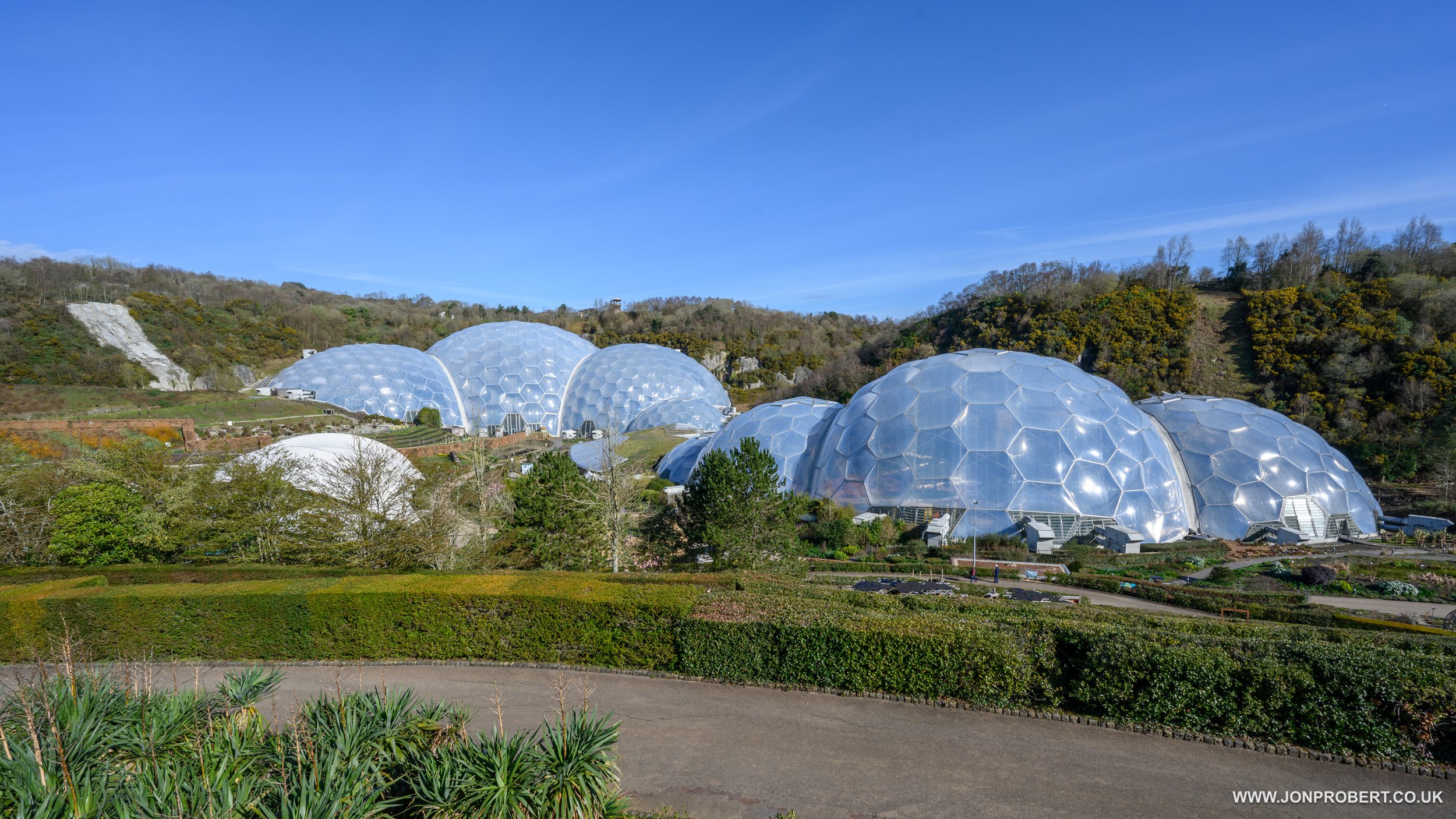
Eve
Pete and Sue Hill | 2005-2007
Growing out of the landscape, this living sculpture is made of Eden clay, mirrors and planted with a selection of grasses.
This female figure, originally conceived as Eve, has now come to represent and embody the broader notions of nature, earth, and the wild. She is part of a series of Green Women sculptures; one of which is her precursor, the Mudmaid at The Lost Gardens of Heligan..

Seed
2007
In 2003 Peter Randall-Page was commissioned to collaborate with Jolyon Brewis of Grimshaw Architects on the design of a new education building for the Eden Project in Cornwall. The result is a building whose roof structure is based on the geometric principles underlying plant growth. At the centre of the building is a specially designed chamber housing ‘Seed’, an enormous granite sculpture based on the same spiral phyllotaxis pattern as the structure itself.

∞ Blue
At almost nine metres tall and weighing twenty tonnes, ∞ Blue is an immersive installation that pays homage to cyanobacteria, among the world's smallest living beings.

Coco de mer
Lodoicea maldivica
This endangered palm from the Seychelles bares the world's largest seed. It looks like a bottom! The palm uses a lot of energy to produce the enormous fruits. Funnel shaped leaves direct old pollen and flowers to the roots to recycled the nutrients.








